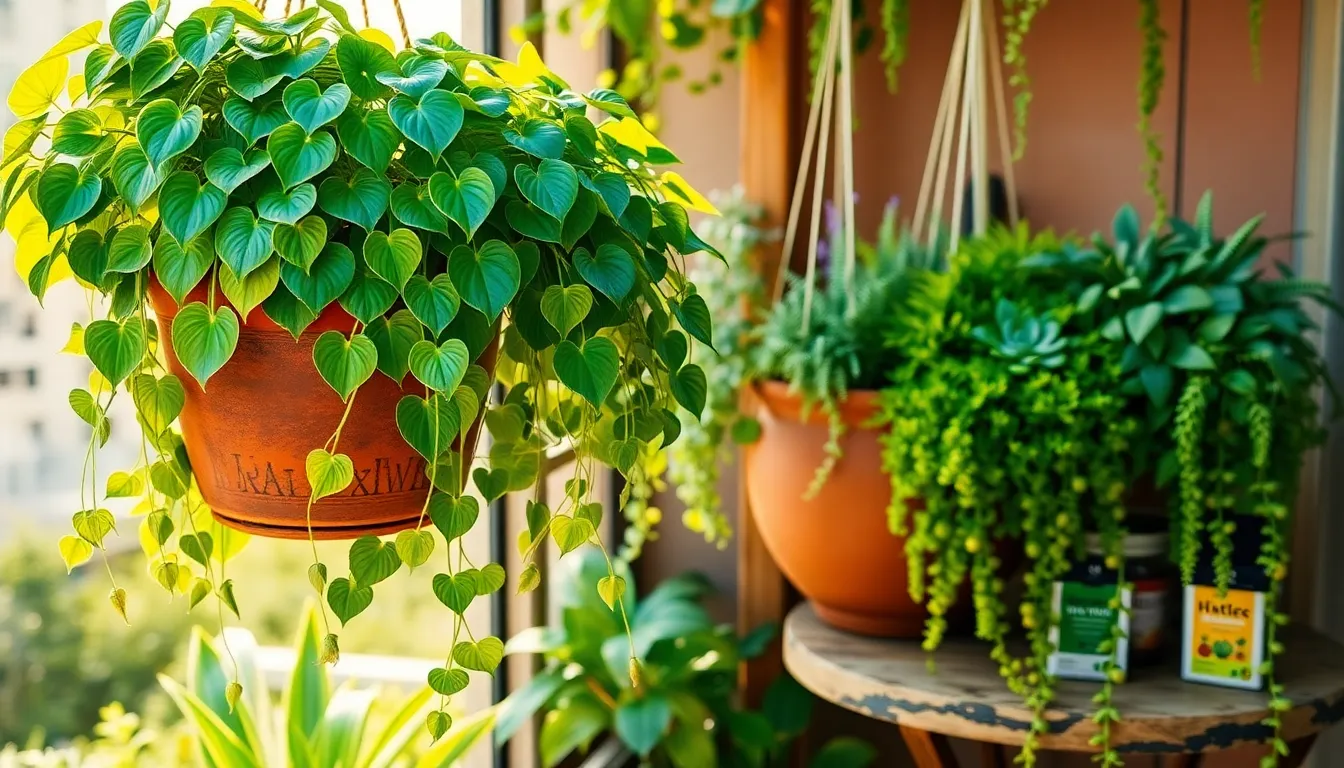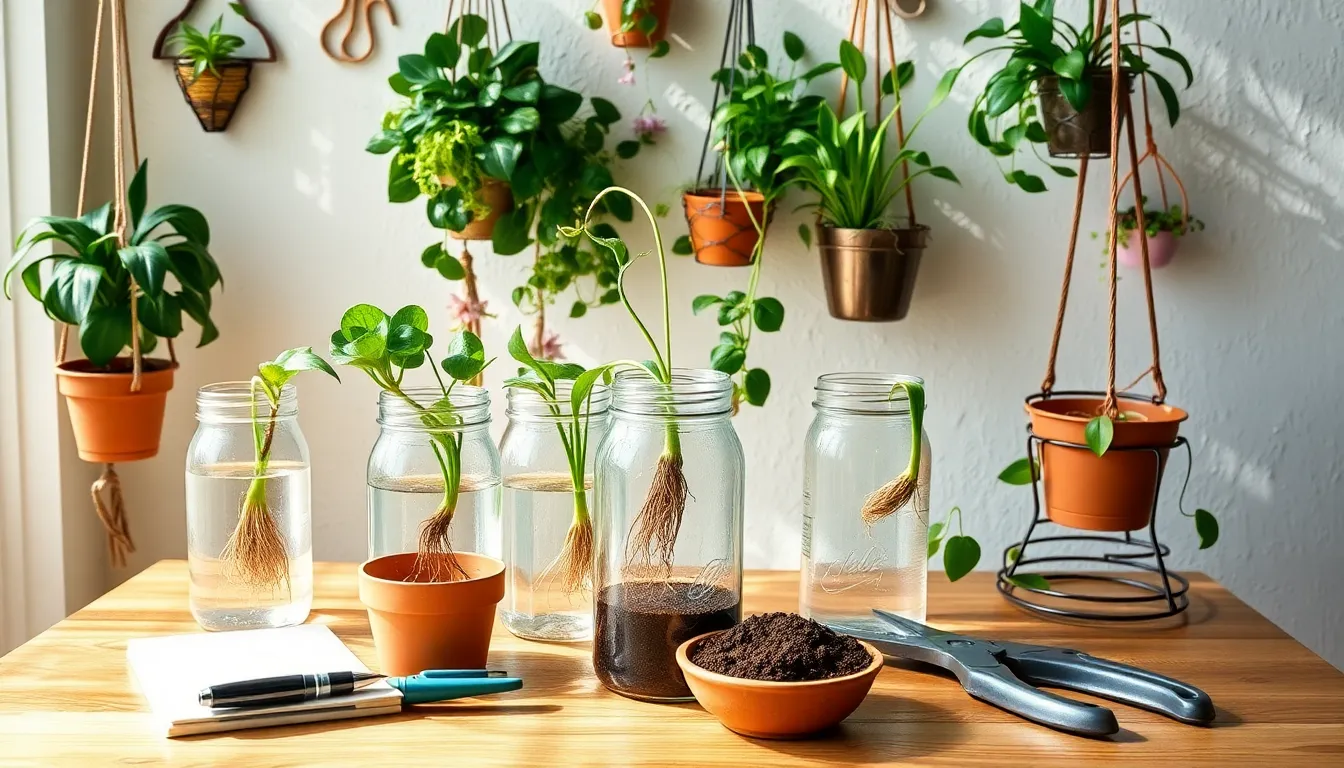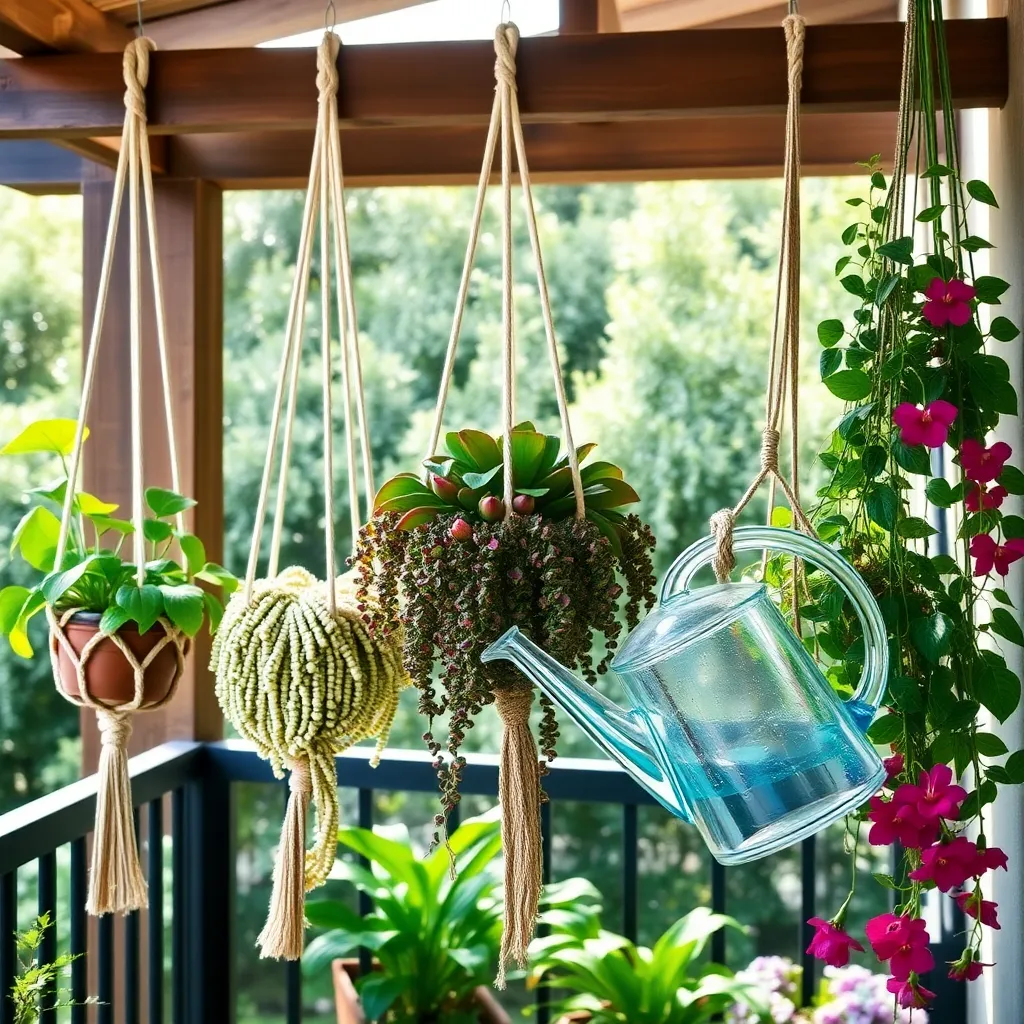As we journey into the verdant world of gardening, few delights are as rewarding as the sight of lush, cascading greenery spilling from a hanging basket. Whether you’re a beginner just starting to explore the joys of plant care or a seasoned gardener with years of experience, the allure of hanging plants is undeniable. Their ability to transform mundane spaces into vibrant oases is nothing short of magical, yet the task of maintaining them can sometimes feel daunting, especially in our bustling lives.
Enter the hardy heroes of the plant world: hanging plants that thrive on a bit of neglect. In this article, you’ll discover nine resilient species that can withstand the occasional forgetfulness, making them perfect companions for both the busy gardener and those new to nurturing green life. We’ll delve into the unique characteristics of each plant, offering tips and insights that will empower you to cultivate a stunning vertical garden with minimal fuss.
You’ll find that creating an enchanting display of hanging plants doesn’t require a green thumb or endless hours of care. By the end of our exploration, you’ll have a toolkit of knowledge to transform your space, armed with confidence and a new appreciation for these undemanding yet captivating plants. So, let’s embark on this journey together and uncover the secrets to effortlessly beautiful hanging gardens, where even a little neglect can lead to thriving greenery.
Choosing Resilient Hanging Varieties

When selecting hanging plants that can withstand neglect, focus on varieties known for their durability and low maintenance needs. Plants like the Pothos and Spider Plant are excellent choices because they thrive even with infrequent watering.
Consider the light conditions where you plan to hang your plants, as this impacts their resilience. Many hanging plants, such as English Ivy, prefer indirect light, making them suitable for less sunny areas of your home.
For a thriving hanging garden, select plants that can tolerate dry conditions. Succulents, like the String of Pearls, are particularly hardy and can survive occasional neglect due to their ability to store water in their leaves.
Ensure that your plants have good drainage, as this is crucial for preventing root rot. Use a soil mix specifically designed for hanging plants, which typically includes components like perlite or sand to enhance drainage.
Understanding Neglect-Tolerant Traits
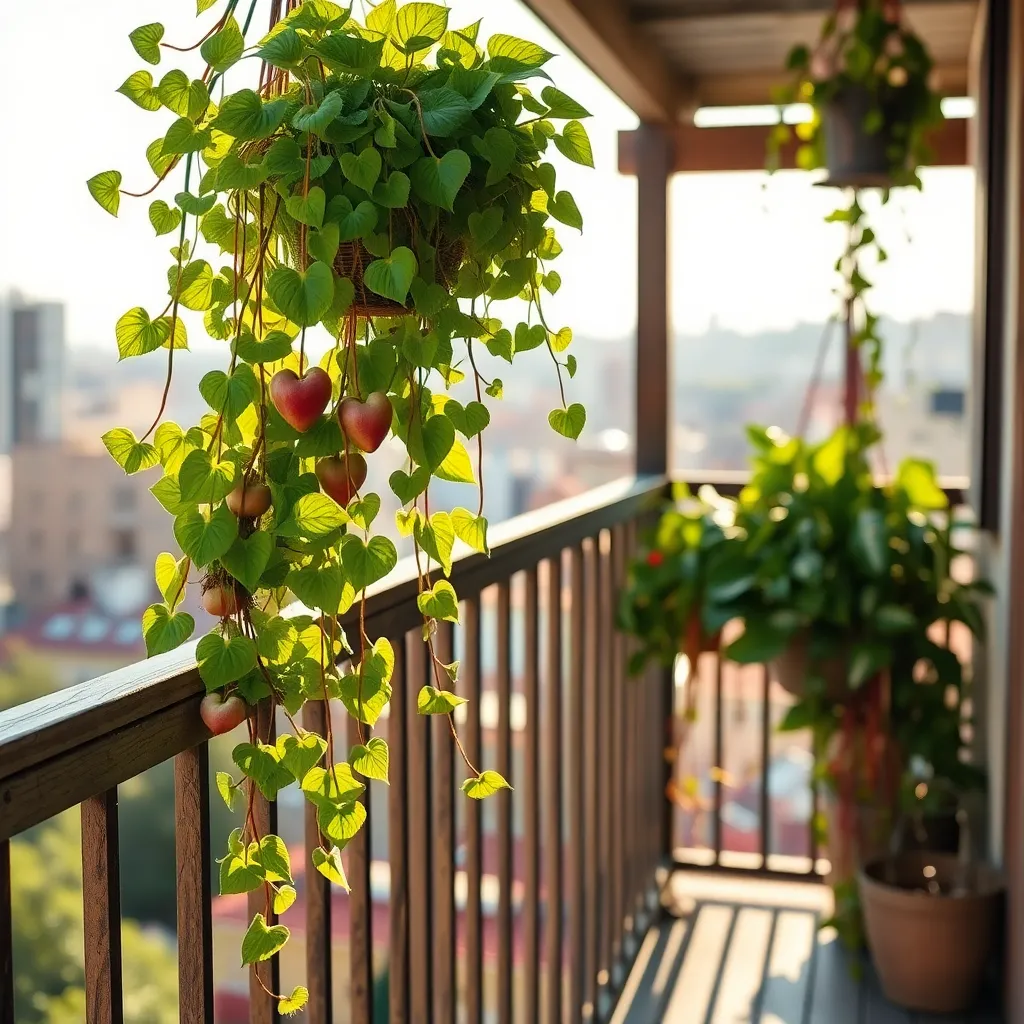
Understanding neglect-tolerant traits in plants is crucial for any gardener looking to maintain vibrant hanging baskets without constant care. These plants typically have adaptations that help them survive in less-than-ideal conditions, such as drought or inconsistent watering.
One key trait to look for is drought resistance; plants like succulents and certain ferns can store water in their leaves and stems. This allows them to thrive even if you forget to water them regularly, making them ideal for busy gardeners.
Another important characteristic is the ability to tolerate low light conditions, which is common in many indoor hanging plants. Plants such as pothos and spider plants can survive with minimal sunlight, allowing them to flourish in shaded or indoor environments.
Additionally, look for plants with robust root systems that can adapt to various soil types, including well-draining potting mixes. These roots help the plant absorb nutrients efficiently, even when soil conditions are not perfect, ensuring healthy growth with minimal intervention.
Low-Maintenance Light Requirements
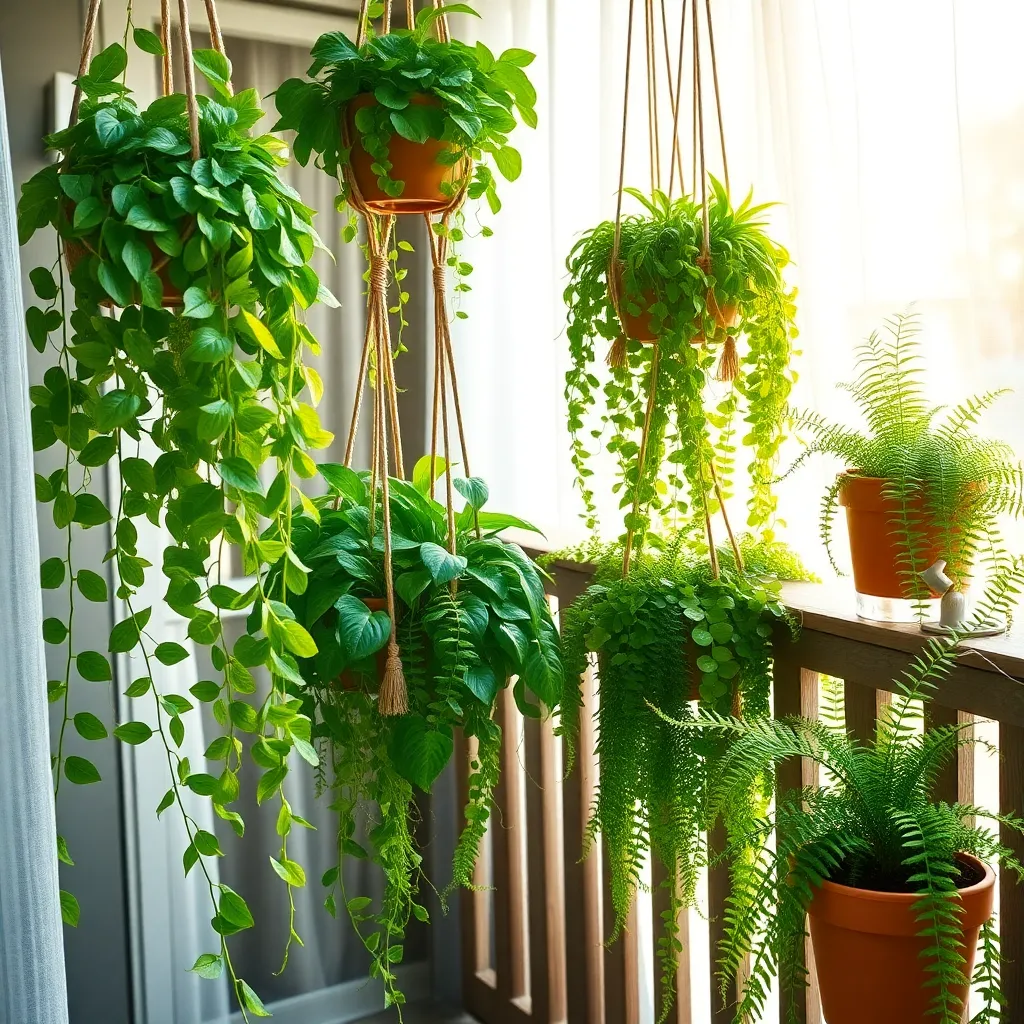
When selecting hanging plants that can thrive under neglect, understanding their light requirements is crucial. Many of these plants are adaptable, making them ideal for various indoor environments where light may not always be consistent.
Plants like pothos and spider plants can tolerate low to medium light, which means they won’t suffer if placed in a dim corner. However, they do appreciate brighter, indirect light for optimal growth, so consider placing them near a north or east-facing window if possible.
For those with more natural light, options like Boston ferns and string of pearls can make excellent choices. These plants prefer bright, indirect light and will thrive when given a spot near a well-lit window, but out of direct sun to prevent leaf scorch.
Beginners should remember that light levels can vary throughout the year. To keep your plants happy, rotate them occasionally to ensure all sides receive light and adjust their position as the seasons change to maintain consistent light exposure.
Minimal Watering Needs Explained
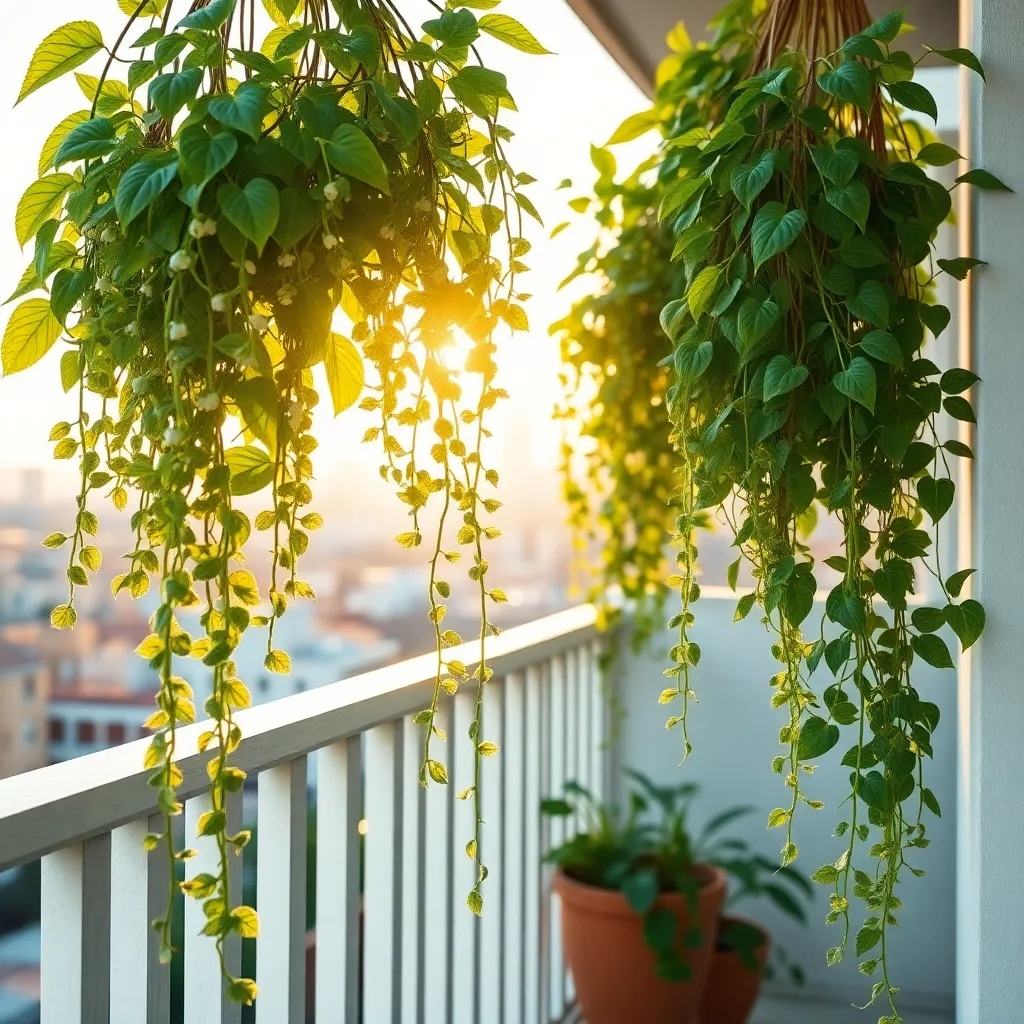
Minimal watering needs are a blessing for busy gardeners, making it easier to maintain lush, thriving plants. Hanging plants like the **Spider Plant** and **Pothos** naturally require less frequent watering due to their hardy nature.
For optimal growth, these plants typically thrive in well-draining soil, which prevents waterlogging and encourages healthy root systems. Consider using a mixture of potting soil and perlite, as it improves aeration and drainage, ensuring your plants receive just the right amount of moisture.
Water your hanging plants when the top inch of soil feels dry to the touch. This generally means watering every 1-2 weeks, depending on the humidity and temperature of your environment.
Advanced gardeners can benefit from using self-watering pots, which help regulate moisture levels automatically. By incorporating a reservoir at the base, these pots provide a consistent supply of water, reducing the risk of overwatering.
Soil Mix for Sturdy Growth
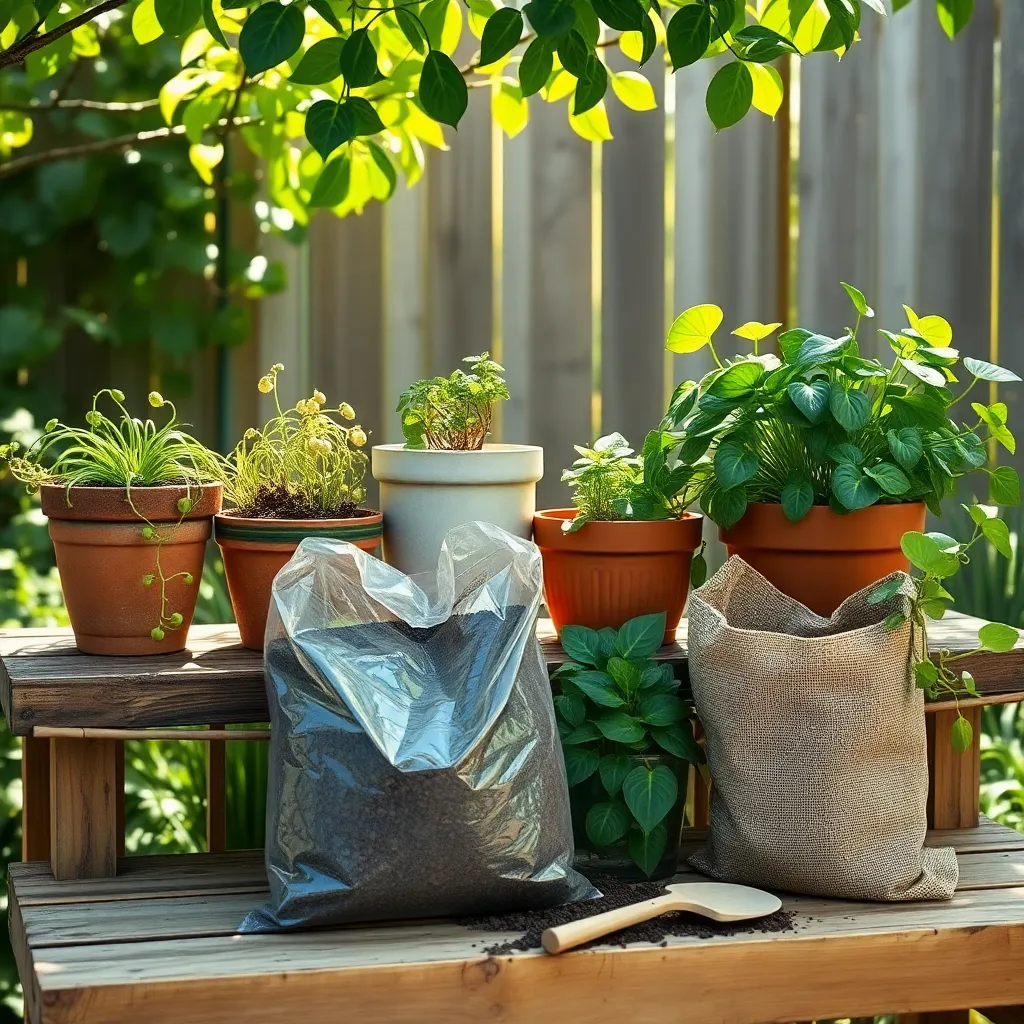
To ensure your hanging plants thrive, selecting the right soil mix is crucial. A well-draining soil mix prevents root rot, which is common in hanging plants due to limited airflow.
Begin with a base of high-quality potting soil, which should be loose and airy. Consider adding perlite or pumice to improve drainage and aeration, essential for healthy root development.
Incorporating organic matter like compost or coconut coir can enhance moisture retention. These materials also provide essential nutrients, giving your plants a steady supply of food as they grow.
For those with more experience, creating a custom soil mix can further optimize plant health. Mixing peat moss, vermiculite, and sand in equal parts can provide a balanced environment for most hanging plants.
Remember, each plant species may have specific soil preferences. Always research individual plant needs to tailor the soil mix accordingly, ensuring a suitable home for each of your hanging beauties.
Fertilizing: Less Is More
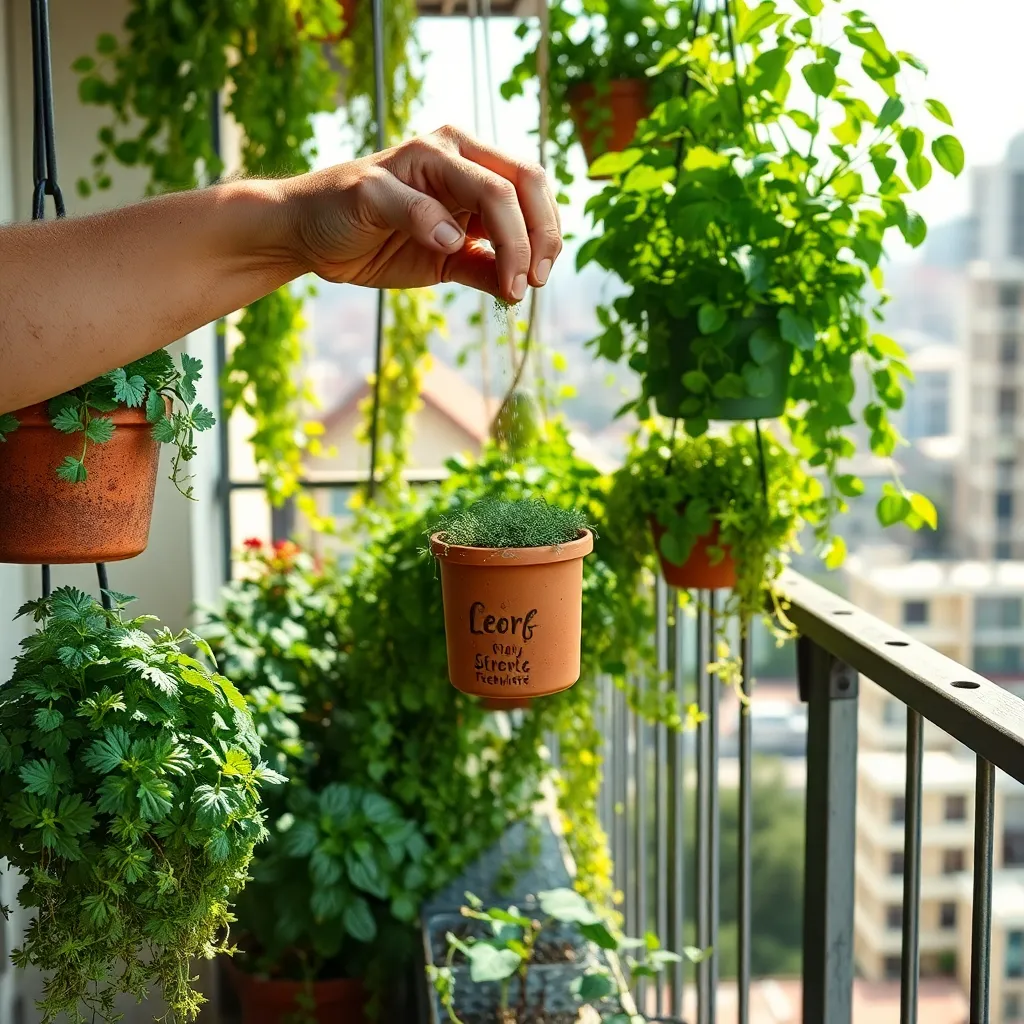
When it comes to fertilizing hanging plants, remember that less is often more. Over-fertilizing can lead to lush foliage but at the expense of blooms, which is not ideal for many ornamental hanging plants.
Instead of frequent feeding, consider using a slow-release fertilizer that gradually supplies nutrients over time. This approach minimizes the risk of nutrient burn and ensures a steady, balanced feeding.
For many hanging plants, fertilizing once every six to eight weeks during the growing season is sufficient. Always follow the manufacturer’s instructions for the correct dosage to avoid overloading the plants with nutrients.
Incorporating organic matter, like compost or worm castings, into the soil mix can also provide a natural, gentle nutrient supply. This method not only nourishes the plants but also improves soil structure and water retention.
Pest Resistance in Hanging Plants
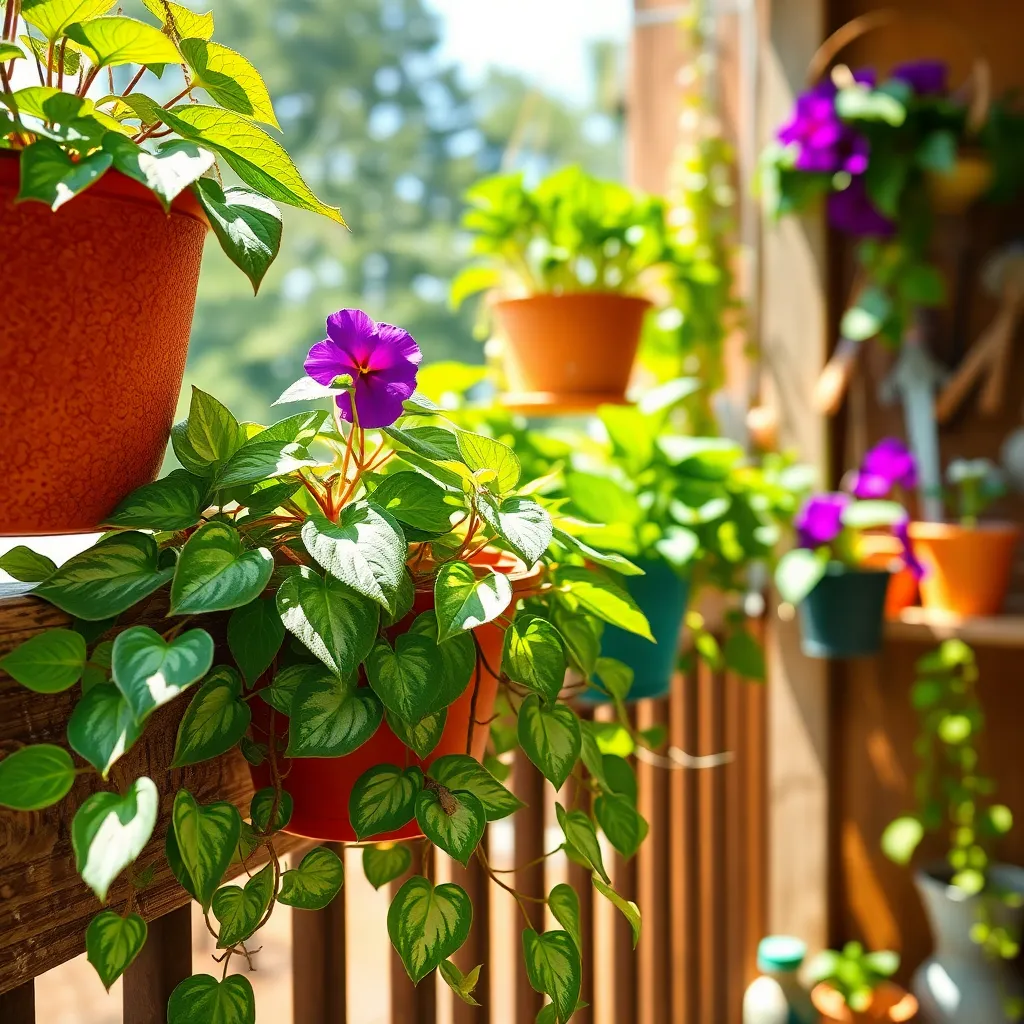
Growing hanging plants that are naturally pest-resistant can save you time and effort in maintenance. Plants like spider plants and Boston ferns are known for their ability to deter common pests due to their tough leaves and natural deterrents.
To boost pest resistance, ensure your hanging plants are in the right environment. Bright, indirect sunlight and proper air circulation can help keep pests at bay by preventing the damp, stagnant conditions they thrive in.
Regularly inspecting your hanging plants is key to early pest detection and prevention. Look for signs of infestation such as discolored leaves or sticky residue, and address any issues promptly to prevent them from spreading.
For those looking to improve pest resistance further, consider incorporating organic pest control methods. Neem oil and insecticidal soap are effective treatments that can be used safely on most hanging plants without damaging them.
Pruning Techniques for Longevity
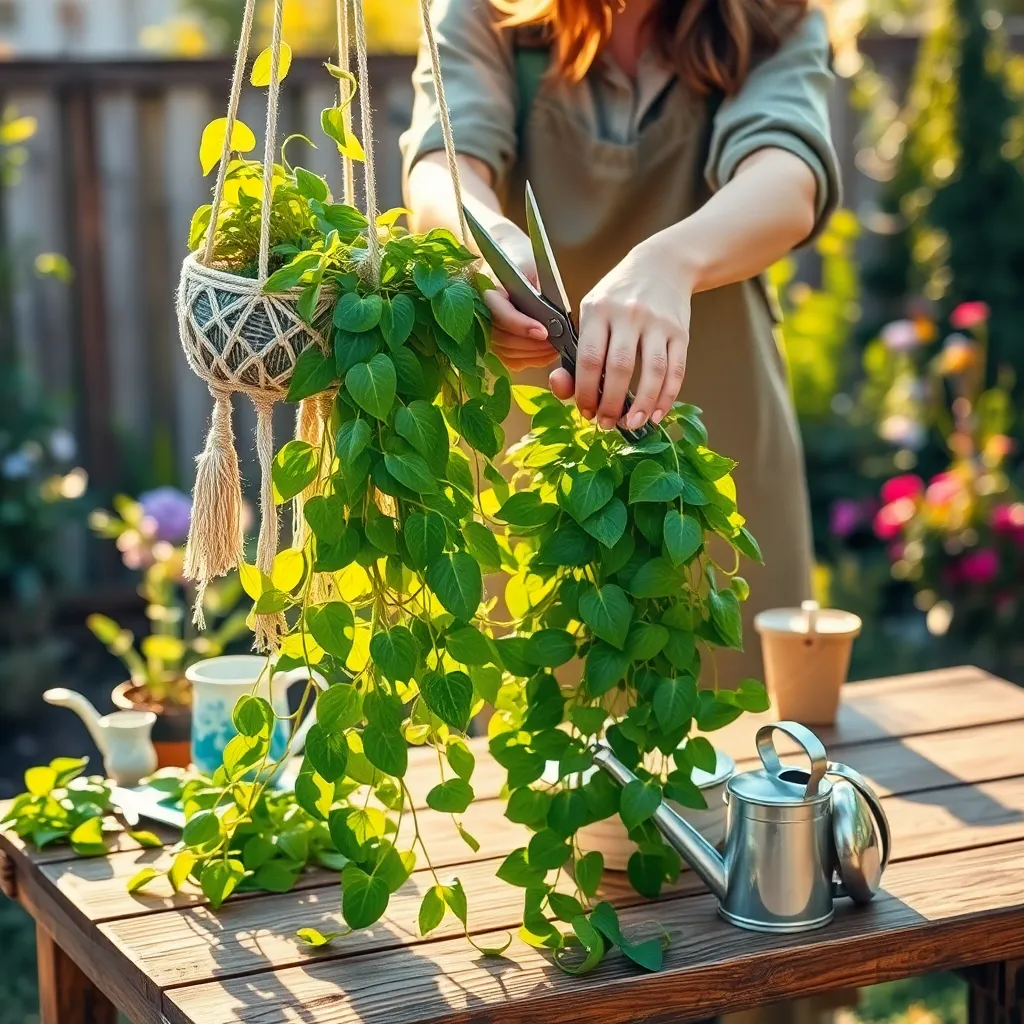
Pruning your hanging plants is essential for promoting their health and longevity. By removing dead or diseased foliage, you encourage new growth and prevent the spread of plant diseases. Begin by identifying the stems that are overgrown or damaged, and use clean, sharp scissors or pruning shears to make cuts just above a node or leaf joint.
For beginners, it’s important to remember that less is often more when it comes to pruning. Start with minimal cuts until you become more confident in how your plant responds, as some species may be sensitive to extensive pruning. Observe your plant’s growth pattern and aim to prune during the active growing season, which is generally spring and summer.
Experienced gardeners can take pruning a step further by shaping their hanging plants to enhance aesthetics. You can strategically trim stems to encourage bushiness or to maintain a specific shape. This technique not only improves the plant’s appearance but also improves air circulation, which helps prevent pests and diseases.
Remember that different plants have varying pruning needs, so it’s crucial to tailor your approach. For example, trailing plants like the pothos may require more frequent trimming to keep them in check, while succulents in hanging baskets might need only occasional deadhead pruning. Always research the specific needs of your plant to ensure you’re providing the best care possible.
Seasonal Care Tips for Survivors
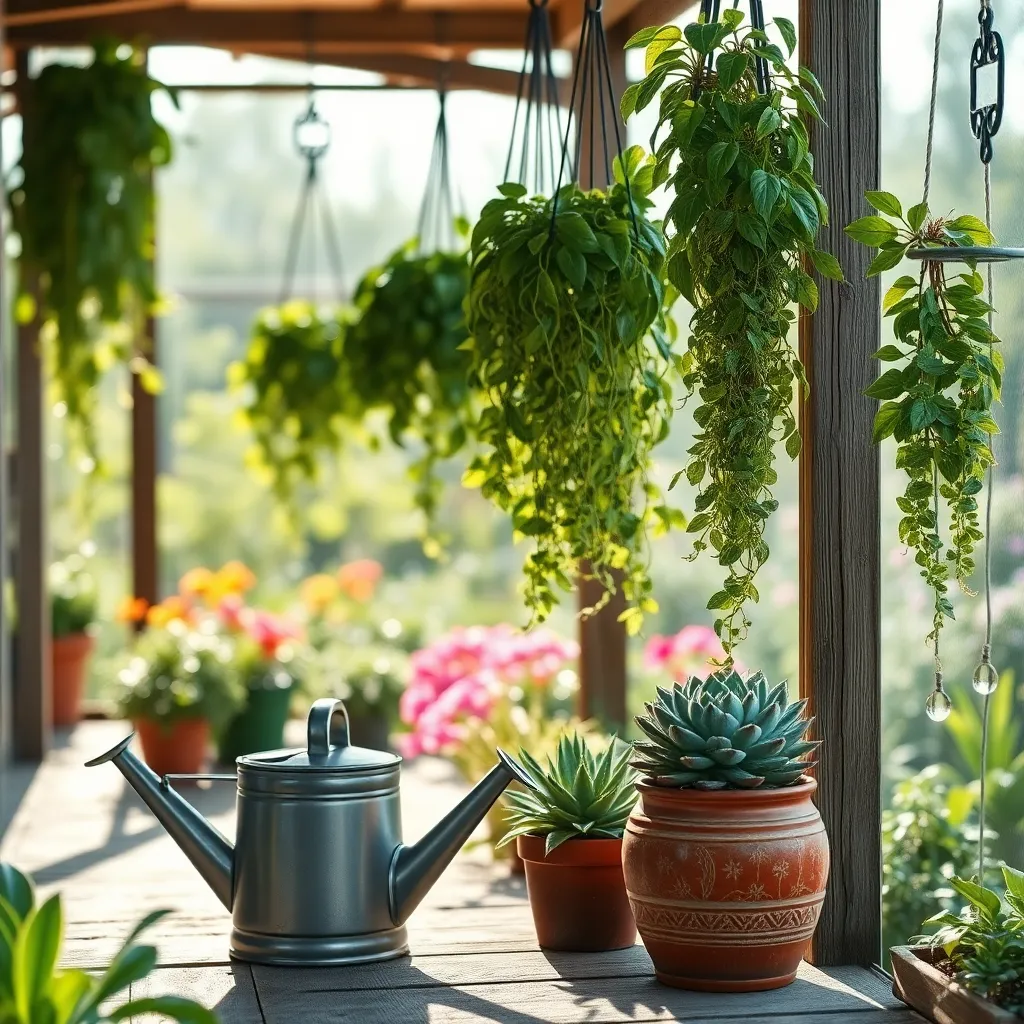
During the winter months, many hanging plants benefit from a reduced watering schedule, so it’s essential to adjust your routine accordingly. For instance, string of pearls and spider plants should be watered only when their soil feels dry to the touch, typically every two to three weeks.
In spring, as daylight increases, your hanging plants will enter a growth phase and require more attention. Gradually increase watering frequency and consider feeding with a balanced liquid fertilizer every four weeks to support new growth.
Summer is a time for thriving, but it also poses risks from intense heat. Ensure your plants receive adequate moisture by checking the top inch of soil regularly and watering when dry, focusing particularly on Boston ferns and pothos, which appreciate consistent moisture.
As autumn arrives, prepare your plants for the transition by reducing fertilizer application and pruning any dead or damaged leaves. This seasonal care not only keeps your plants healthy but also primes them for the quieter winter months when they require less intervention.
Conclusion: Growing Success with These Plants
In exploring the world of low-maintenance hanging plants, we’ve drawn parallels with key relationship concepts that thrive even amidst occasional neglect. We learned about resilience with the Spider Plant, the beauty of simplicity from the Pothos, and the importance of adaptability through the String of Hearts. The Boston Fern taught us the value of thriving in diverse environments, while the Burro’s Tail highlighted patience. Through the Maidenhair Vine, we discovered the strength in vulnerability, and the Air Plant reminded us of the importance of self-sufficiency. The Hoya’s tenacity and the English Ivy’s ability to climb to new heights exemplified growth and perseverance.
To immediately nurture your relationships, choose one concept and focus on it this week—be it adaptability, patience, or vulnerability. By doing so, you lay the foundation for a flourishing connection.
Bookmark this article as your go-to guide for relationship growth and inspiration. In embracing these plant-inspired lessons, you’re not just cultivating greenery but also sowing the seeds for enduring and fulfilling relationships. Remember, just as these plants thrive, so too can your relationships, with a little care and attention, bloom beautifully. Save this resource as your reminder that love, like nature, can flourish against all odds.


